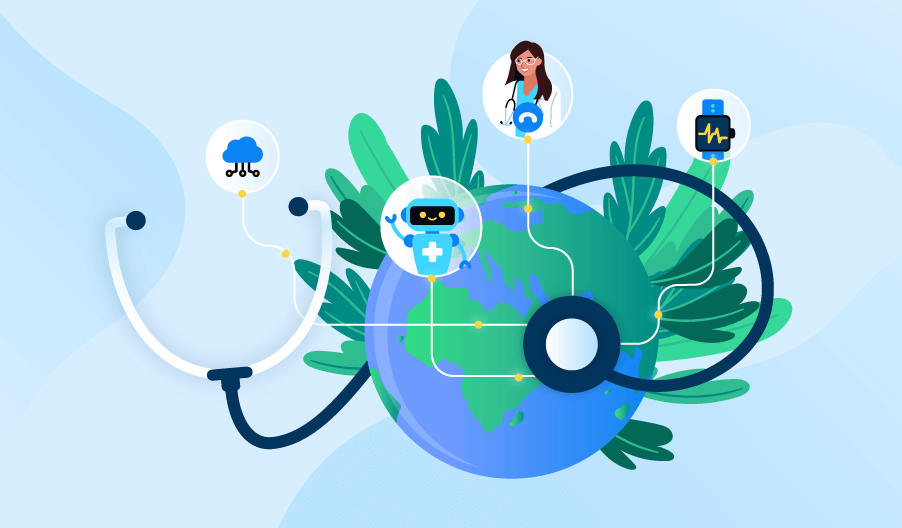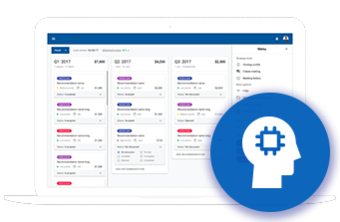Technologies to Advance Oman’s Carbon-Free Healthcare Goals

Editor’s note: Hadeel shares core insights from her session at OHEC 2025, an annual Omani national forum that convenes policymakers, providers, and technology leaders for collaboration and investment in the healthcare sector. At the session, Hadeel was joined by Chetan Bagga, the chief executive and founder of Archetype. Archetype is a consulting and investment platform that supports care navigation and post-care models to reduce costs and enhance the member experience, which aligns with the goals of many Omani providers operating under prudent budgets.
If you are looking to develop an actionable IT roadmap that complies with GCC PDPL and governance policies and Vision 2040, feel free to reach out to Hadeel and other healthcare IT experts at ScienceSoft.
Key Takeaways From the OHEC Discussion: Oman’s Path to Sustainable Healthcare
Smarter care models can bring sustainability as Oman advances its core healthcare goals
In Vision 2040 and the National Health Policy 2025, Oman set clear healthcare goals that include sustainability. Providers seek to support those aims, yet immediate pressure sits in other areas, such as staff gaps, access to care outside Muscat, and tight budgets. The obvious conclusion is that healthcare should deliver patient outcomes and care access first, then expect a lighter carbon footprint as a natural result of smarter care models.
Take by Hadeel Abu Baker: When care teams face thin staffing, it’s better to focus on staff workload relief rather than chasing a green badge. For example, providers can set up AI intake and triage with nurse oversight, which clears queues and redirects clinical time to actual care. This automation effort will reduce desk time and allow the same staff teams to serve more patients, so it also trims commute emissions and facility energy spending per case. The energy cost of a single LLM query (e.g., for intake and triage) is trivial compared to the facility and human energy saved on in-person visits, calls, and manual computer operations.
Take by Chetan Bagga: The patient should always stay at the center of healthcare. Patient outcomes set the benchmark, and once that holds, we, as investors, seek the same results through a resource-efficient path that respects capital, environmental inputs, and people. So, the system can sustain performance over time, with a smaller footprint that follows as a bonus.
Administrative AI and at-home prevention tools bring measurable sustainability gains
Vision 2040 and Health Policy 2025 outline Oman’s goal of a high-quality, technology-enabled, decentralized healthcare system. The technologies to make this possible sustainably are already within reach.
Take by Hadeel Abu Baker: In ScienceSoft’s experience, four key technology options match Oman’s 2040 goals and infrastructure:
- AI agents for administrative tasks under nurse governance shorten queues and give staff more patient time.
- Telemedicine brings the clinic to the patient and expands access outside Muscat without new sites.
- Prevention tools can use approved national sources, such as Shifa records, together with home vitals from RPM kits, patient questionnaires, and outreach results to surface early risk in high-burden cohorts like diabetes.
- Cloud shifts spend to OpEx, so capacity tracks demand and idle hardware fades, which also lowers the footprint.
Take by Chetan Bagga: At Archetype, we see strong results from post-acute and home care models, where patients continue recovery at home and stay connected with physicians through AI support. It eases bed pressure, limits avoidable returns, and reduces travel, so each case uses fewer site-based resources and a smaller facility footprint.
What stakeholders can do now to advance sustainability in healthcare?
Take by Hadeel Abu Baker: Omani providers could begin with telemedicine and AI agents for administrative tasks. These tools need smaller upfront spend and deliver early gains such as shorter queues, steadier care access, and lower routine staff workload. More advanced steps could include prevention programs based on Oman’s national digital rails, which help detect chronic risks earlier and reduce the load on hospitals in the long run.
Take by Chetan Bagga: Oman’s healthcare community has a chance to shape its own innovation identity. Forums like OHEC offer a space to decide together which technologies deserve priority investment and can define where the market will create the most value by 2040.
Questions Omani Health Leaders Pressed at OHEC 2025
Hadeel Abu Baker: These topics came up most often in my conversations with Omani healthcare leaders during OHEC. Here, I offer fuller answers to these practical questions than the session format allowed.
How do we protect patient data when we adopt AI solutions?
Patient data protection in AI starts with lawful use under Oman’s PDPL and the 2024 Executive Regulations. Each AI use case needs a documented purpose (e.g., intake and triage) approved by a clinical owner, with data fields limited to that purpose. Patients must give explicit consent, and any data use beyond the original AI agent purpose, like outreach or model update, demands new legal justification, typically extra consent. The Executive Regulations took effect on February 5, 2024, with a compliance grace period to February 5, 2025, so Omani providers can set these controls as a standard for any pilot now.
With that legal footing set, the most common pitfall appears when an AI agent sends prompts with PHI to a vendor LLM that runs outside the healthcare provider network. A safe practice includes the following:
- Keeping the computing processes in local Omani data centers and applying PHI scrubbing before any external model call. For example, an intake and triage AI agent can strip names, MRN, phone numbers, and policy numbers before sending any prompt to the public LLM.
- Implementing fixed prompt templates and a list of approved external tools that ensure the agent interacts only with the intended LLM and doesn’t leak patient context by accident.
- Encrypting data in transit and at rest and keeping complete logs.
- Running the LLM endpoint under a contract that prohibits reusing prompts and outputs for model training.
These controls prevent leakage without slowing care and prepare teams for scale.
Should providers use de-identified datasets for AI tools?
Truly anonymous data doesn’t fall under PDPL. Pseudonymized data, which keeps coded patient IDs or keys that allow it to be reversed, stays personal and still requires PDPL safeguards and consent. For healthcare AI agents, anonymous data is mostly unsuitable because the loss of patient identifiers prevents, for example, a diabetic care agent from linking blood sugar measurements for the same person, which makes it impossible to adjust care recommendations. For this reason, pseudonymized data is applied in most cases, and the main question is how to minimize privacy risks in this setup.
In practice, it means ensuring that pseudonymized patient data never leaves a controlled environment, a secure data enclave located within Oman. The enclave keeps re-link keys in a separate vault, enforces role-based access and encryption, and logs every AI prompt to meet PDPL requirements.
Here’s how the diabetic care agent can use pseudonymized records, stored in an Omani enclave, to perform tailored patient outreach that supports lifestyle change:
In this way, the system stays compliant with PDPL while still providing personalized communication.
How can we make public-private partnerships (PPP) work to enable tech-enabled care models?
Under Oman’s PPP framework established by Royal Decree 52 of 2019, PPP contracts hinge on measurable service outputs. Let’s consider a public hospital that partners with a private home-health operator for post-discharge recovery. The private partner must comply with contract KPIs, such as first-contact time after discharge, alert response time, avoidable bed-days, etc. PPP operations software usually serves as the spine of the deal because it can ensure seamless patient data exchange through open APIs and FHIR, capture KPIs without manual steps, and provide audit-ready logs, so settlement survives disputes.
The joint platform can also route eligibility checks, prior authorization, claims, and remittance through Dhamani. It’s another important point since a PPP adds a party between the private provider and insurer — the public body issues a quality acceptance certificate before services can be charged, which slows cash flow. To fix these issues, the software should link the service event stream to the hospital’s acceptance workflow, flag any missing proof, and push clean utilization and claim events into Dhamani.
The law also expects knowledge transfer. The private home-health partner must hand over its heart-failure escalation playbook, monitoring device kit SOPs for issue and return, the KPI data dictionary with API specs, etc. To support the process, the platform should keep a searchable knowledge base with role-based access and one-click exports, so public teams can prove conformance and continue operations at handover without delays.
This is when a PPP can stop draining budgets and start to free beds, keep cash flow predictable for the private partner, and extend quality care outside Muscat. And at the same time, care gets more sustainable by moving closer to the patient and cutting unnecessary facility time.

A dedicated session with ScienceSoft’s healthcare AI experts yields a practical roadmap covering priority use cases, GCC compliance checkpoints, integration steps, and budget-time estimates for Arabic-capable AI for patient engagement, clinical decision support, or clinical operations.
Book a practical expert session



